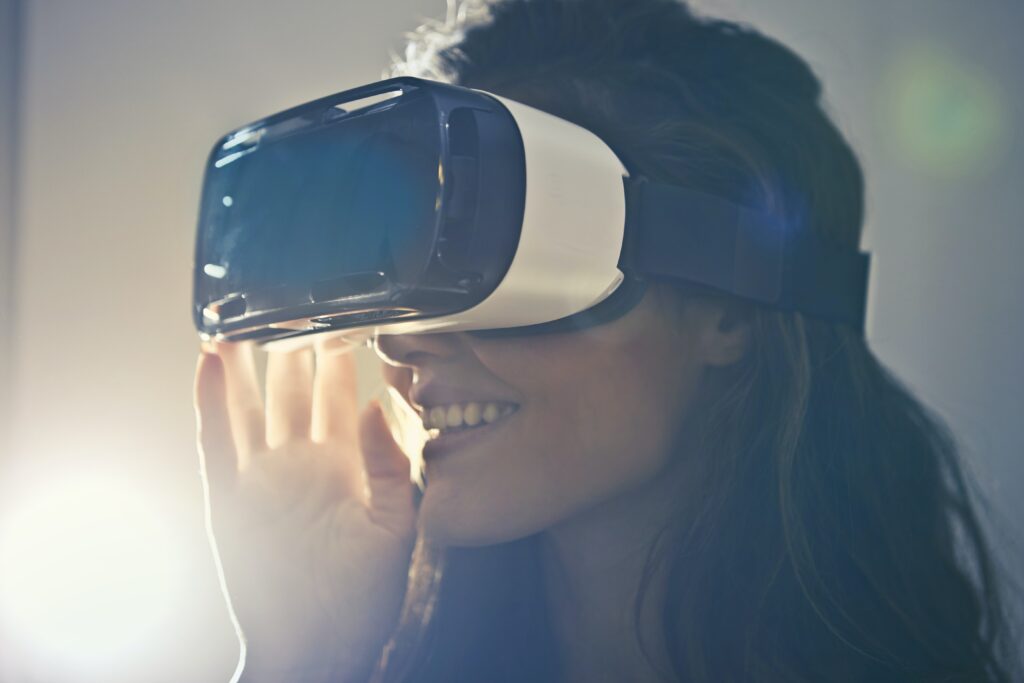Virtual reality technology has been making waves in the entertainment industry for years, but it’s only recently started to make a significant impact in the world of fitness. Virtual reality workouts, or VR workouts, have become increasingly popular among fitness enthusiasts, and many experts are predicting that it could be the next big thing in fitness. In this blog, we’ll explore the benefits and drawbacks of VR workouts and what the future of fitness could look like with this technology.
First, let’s define what a VR workout is. Essentially, it’s a fitness program that uses virtual reality technology to create an immersive workout experience. Users wear a VR headset that transports them to a virtual environment, where they can engage in a variety of activities, from boxing and cycling to yoga and meditation. The technology can track the user’s movements and provide real-time feedback, making the workout feel more engaging and interactive.
One of the biggest advantages of VR workouts is their ability to create a more engaging and immersive workout experience. By transporting users to a virtual environment, VR workouts can provide a distraction-free workout experience, helping users to stay focused and motivated. In addition, the technology can create a sense of community, allowing users to connect with other users and trainers in the virtual environment.
Another advantage of VR workouts is their potential to improve the overall quality of the workout. By providing real-time feedback on form and technique, the technology can help users to get the most out of their workout and reduce the risk of injury. In addition, VR workouts can be customized to meet the user’s individual needs and fitness goals, allowing for a more personalized workout experience.
However, there are also some drawbacks to VR workouts. One potential issue is the cost. VR technology can be expensive, and not everyone may be able to afford the necessary equipment. In addition, some users may find the VR experience to be disorienting or uncomfortable, which could make it difficult to maintain motivation over time.
Another potential concern is the lack of real-world experience. While VR workouts can provide an engaging and immersive experience, they can’t replicate the experience of being in a real gym or fitness class. Some users may miss the social interaction and sense of community that comes with working out in a real-world environment.
So, what does the future of fitness look like with VR technology? While it’s still too early to tell, many experts believe that VR workouts could play a significant role in the fitness industry in the coming years. Some fitness companies have already started to incorporate VR technology into their offerings, and the trend is expected to continue to grow.
One potential area of growth is in the at-home fitness market. With more people working from home due to the pandemic, the demand for at-home workout solutions has increased. VR technology could provide an innovative and engaging way for users to get a full-body workout without leaving their homes.
Another area of growth could be in the corporate wellness market. Many companies are looking for ways to improve employee health and wellness, and VR workouts could provide an engaging and effective solution. By providing employees with a virtual environment to work out in, companies could help to improve employee health and productivity while also promoting a sense of community and connection among employees.
In conclusion, VR workouts have the potential to revolutionize the fitness industry by providing an engaging and immersive workout experience. While there are still some drawbacks to the technology, the benefits are significant and could help to improve the overall quality of the workout. As the technology continues to evolve and become more accessible, it’s likely that we’ll see more and more fitness companies incorporating VR workouts into their offerings.










